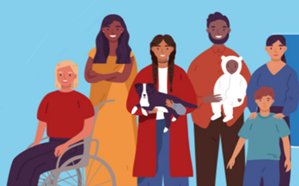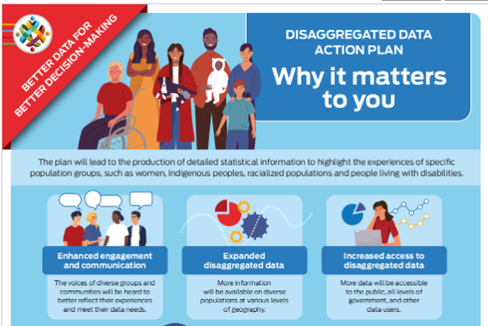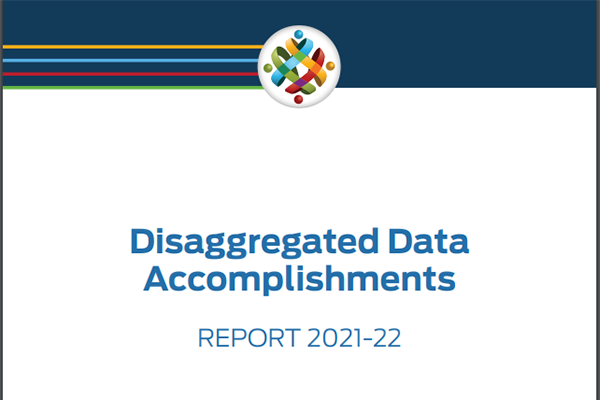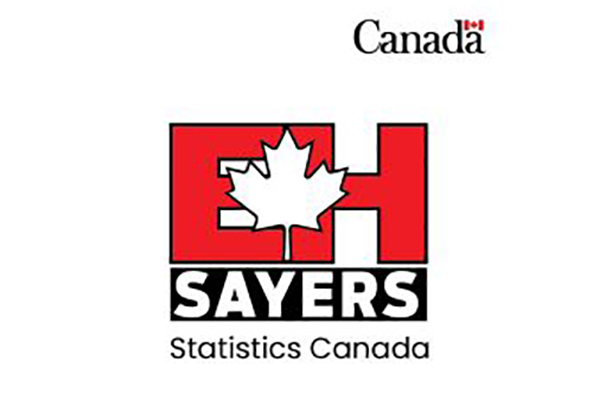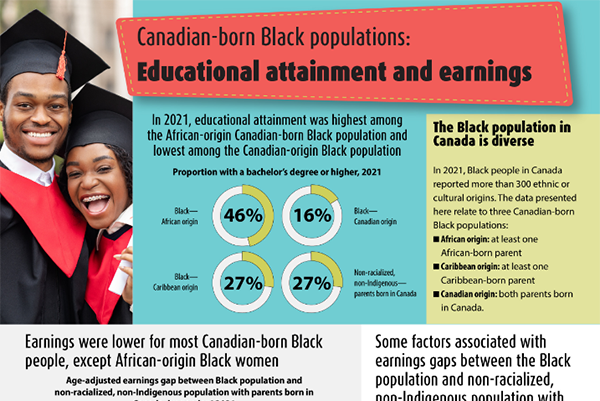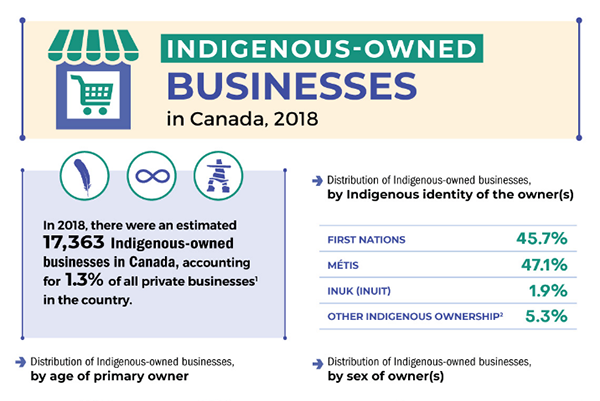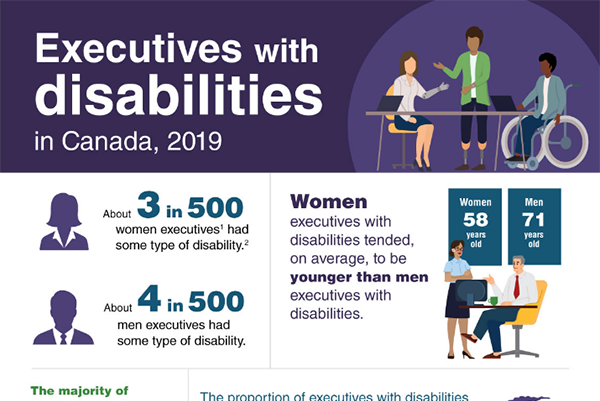
Overview
For years, Statistics Canada has been providing Canadians with big picture statistics on a variety of topics impacting people across the country. However, the big picture can hide key differences in the experiences of specific population groups.
The COVID-19 pandemic highlighted how a single event can be experienced differently across various groups, revealing uneven social and economic realities. To address how different groups have different lived experiences, more detailed data is needed, which can be broken down, or disaggregated, into sub-categories according to gender, ethnocultural characteristics, age, sexual orientation, disability – or intersections of these and other sub-categories. Data also needs to be broken down to the lowest possible level of geography, since events impact people differently depending on where they geographically live.
To produce this detailed disaggregated data, the Disaggregated Data Action Plan (DDAP) was launched with $172 million in funding over five years. A whole-of-government approach led by Statistics Canada, DDAP aims to increase and improve statistics on diverse populations, and to support more representative data collection methods.
These increased and improved disaggregated statistics will give all levels of government, businesses, policy specialists, data users, non-for-profit organizations, and all Canadians the level of detail they need to make evidence-based decisions. By informing policy decisions, these data will strengthen the government's efforts to address systemic racism and gender gaps and help create a more equitable Canada.
DDAP target audience
The DDAP targets the four employment equity groups:
- Indigenous peoples
- Women
- Visible Minorities / Racialized populations
- Persons with disabilities
However, where relevant and possible, disaggregation is extended to other groups (e.g., sexual orientation, children and youth, seniors, official language, immigrants, low-income Canadians).
DDAP's four guiding principles
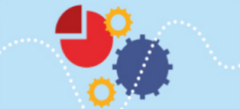
Disaggregation:
Data will be disaggregated at the lowest level of population detail possible, while including Gender-based Analysis Plus (GBA Plus) considerations and respecting quality and confidentiality.

Intersectionality:
Analysis will focus on intersectionality (e.g., young, Black, women) as opposed to dual combinations (e.g., young, women).

Standards:
Statistics Canada's approved standards will be used for disaggregation across all programs.

Geography:
Data will be released at the lowest level of geography possible.
How do we produce more detailed data?
First, Statistics Canada securely combines its census and survey data with data already collected by other federal or provincial / territorial organizations. Data from other organizations are called 'administrative data' and this process of data combination is called 'data linkage'. Data linkages create an opportunity to access more accurate information and conduct comprehensive analyses. It also reduces the number of surveys Canadians are asked to complete.
After creating data linkages, data is then broken down (or disaggregated) into sub-categories according to a combination of gender, race, sexual orientation, disability, and geography. Through this disaggregation, Statistics Canada can increase insights on diverse groups of people, thus shedding light on inequities, and promoting fairness and inclusion in decision-making.
Progress so far
Through DDAP, Statistics Canada is working with Canadians to produce better data for better decision-making.
Since implementing the Disaggregated Data Action Plan, Statistics Canada has added questions about gender, Indigenous identity, ethnicity and geographic location to existing and new surveys, such as the Canadian Social Survey, Survey Series on People and their Communities, Canadian Survey on Business Conditions, Census of Population. The additional questions allow the gathering of more information which can be used for in-depth analysis. For example, according to the results of the Survey Series on People and their Communities, all racialized groups were more likely than the non-racialized group to report having been subjected to some type of unfair treatment in the workplace. However, Black (26%) and Korean (20%) people in Canada were most likely to experience some type of unfair treatment.
Statistics Canada has enhanced the sample sizes of key surveys such as the Labour Force Survey and the Canadian Community Health Survey. This augmentation in sample sizes results in a greater number of responses. Larger sample sizes not only enhance accuracy but also enable Statistics Canada to disaggregate the data, offering a more detailed understanding of the experiences of diverse groups in areas such as the labour market, social aspects, and health.
Administrative data have been linked and integrated to existing data in the Canadian Census Health and Environment. This has allowed for health outcomes, such as mortality, cancer, hospitalizations, ambulatory care and mental health, to be examined by population characteristics, including income, education, occupation, language, ethnicity, immigrant status or Indigenous identity. Furthermore, studies have also been conducted to examine trends in wage inequalities (Gender, Diversity and Inclusion Statistics Hub), housing experiences of various population groups (A tale of two renters: Housing affordability among recent and existing renters in Canada), the over-representation of Indigenous peoples in provincial custody (Over-Representation of Indigenous Persons in Adult Provincial Custody, 2019/2020 and 2020/2021), and the educational and economic outcomes of lesbian, gay and bisexual people from diverse ethnocultural backgrounds (Educational and economic outcomes of lesbian, gay and bisexual people in Canada: A closer look at Canadian-born, immigrant and racialized populations). Disaggregated data and analysis from these surveys are available on Statistics Canada's Gender, Diversity and Inclusion Statistics Hub, which serves as a central place to find disaggregated data, intersectional analysis and insights on diverse population groups.
Finally, Statistics Canada provided funding under the DDAP Administrative Fund to partners, including federal, provincial/territorial, municipal governments, and non-profit organizations, to improve and enhance their own disaggregated administrative data. These disaggregated administrative data can be shared with Statistics Canada to contribute to the growing body of disaggregated evidence in Canada.
Ever since the launch of the DDAP, Statistics Canada has been closely consulting and collaborating with a wide range of partners to ensure that the Agency is addressing key social and economic issues and is meeting the increasing information needs of Canadians. Major achievements from this collaboration include the work done on the Uniform Crime Reporting Survey, and the development and adoption of data standards. Statistics Canada has also partnered with select cities to identify strategies to address municipal data gaps.
Keeping your data safe
All information collected through Statistics Canada's censuses and surveys, as well as administrative data from third parties, is protected by law under the Statistics Act, the Access to Information Act and the Privacy Act. We take the confidentiality and privacy of Canadians very seriously.
Learn more about DDAP
Features
Additional resources

Intersectionality:

Standards:

